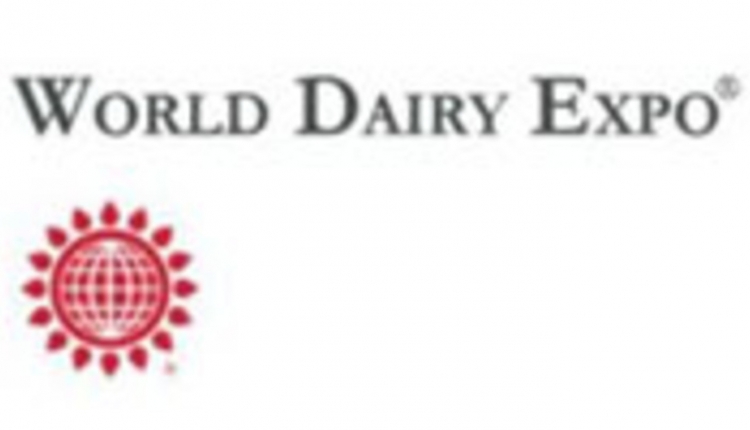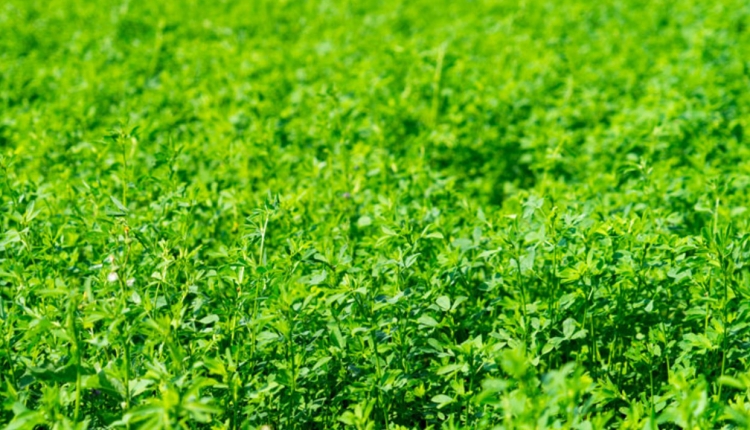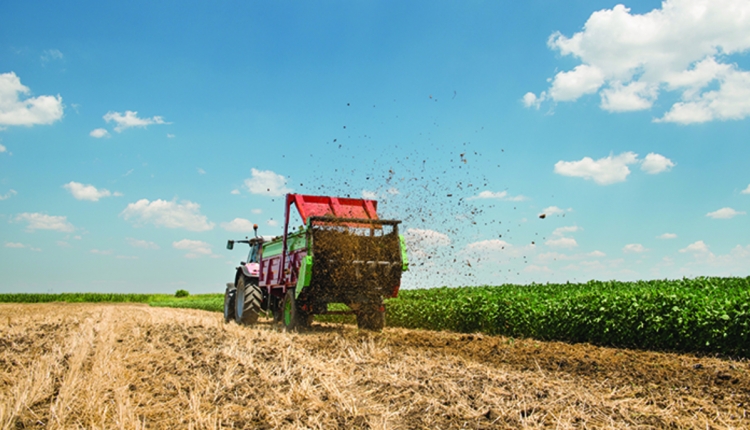The author is director for Dairyland Laboratories, Inc., Arcadia, Wis. He acknowledges the useful input of Dave Mertens at USDA's Dairy Forage Research Center.
Fiber and starch digestibility are important to you and your cows. Many trials have documented that cows will eat more and produce more when fed forages that have higher NDF digestibility. Michigan State researchers reviewed the published literature and found that, for every 1 percentage unit of increase in NDF digestibility:
• Cows will eat 0.44 pound more dry matter per day.
• Produce 0.51 pound more milk.
• Gain 0.09 pound more body weight per day.
Randy Shaver, University of Wisconsin, has said, "A 14 percent unit difference in starch digestibility would translate into a 10 percent unit difference in TDN. At a 10-pound dry matter per cow per day feeding rate of corn, failure to account for this difference could cost 3 pounds of milk per cow per day."
Fiber and starch digestibility measurements can help improve the accuracy of ration balancing. The quality of these measurements are affected by three factors. First, there is accuracy - a measure of the ability of a procedure to measure or predict the "true" or agreed-upon values. For feeds and forages, accuracy implies how closely the analytical value of the samples submitted compares to the true value of the feed. Then there is precision or repeatability. This is a measure of the ability of a procedure to repeatedly provide the same result for a particular sample. Third, there is bias . . . a systematic distortion from the known or consensus value.
Accuracy ensures the analytical measurements are useful for establishing the value of a feed and in formulating diets. Precision is needed to gain confidence in the sampling and the analytical method used, as well as the laboratory performing the analysis.
Forage and feedstuff can vary significantly in NDF and starch digestibility. In addition, the analytical techniques also vary from run to run and from lab to lab. Variation is natural and unavoidable.
Certain procedures (DM, ash, protein) can be measured quite accurately, whereas fiber fractions and fiber digestibility are considerably more variable. NDF digestibility is the combination of two analytical measurements . . . original NDF concentration of the sample and the in vitro dry matter disappearance (IVDMD) of the samples.
Fiber and starch digestibility are important to you and your cows. Many trials have documented that cows will eat more and produce more when fed forages that have higher NDF digestibility. Michigan State researchers reviewed the published literature and found that, for every 1 percentage unit of increase in NDF digestibility:
• Cows will eat 0.44 pound more dry matter per day.
• Produce 0.51 pound more milk.
• Gain 0.09 pound more body weight per day.
Randy Shaver, University of Wisconsin, has said, "A 14 percent unit difference in starch digestibility would translate into a 10 percent unit difference in TDN. At a 10-pound dry matter per cow per day feeding rate of corn, failure to account for this difference could cost 3 pounds of milk per cow per day."
Fiber and starch digestibility measurements can help improve the accuracy of ration balancing. The quality of these measurements are affected by three factors. First, there is accuracy - a measure of the ability of a procedure to measure or predict the "true" or agreed-upon values. For feeds and forages, accuracy implies how closely the analytical value of the samples submitted compares to the true value of the feed. Then there is precision or repeatability. This is a measure of the ability of a procedure to repeatedly provide the same result for a particular sample. Third, there is bias . . . a systematic distortion from the known or consensus value.
Accuracy ensures the analytical measurements are useful for establishing the value of a feed and in formulating diets. Precision is needed to gain confidence in the sampling and the analytical method used, as well as the laboratory performing the analysis.
Forage and feedstuff can vary significantly in NDF and starch digestibility. In addition, the analytical techniques also vary from run to run and from lab to lab. Variation is natural and unavoidable.
- Feeds and forages inherently vary in chemical and biological makeup due to genetic and environmental effects.
- Labs use different analytical procedures. If no variation existed among feeds, analytical labs would not be necessary, and book values would be good enough.
- Many studies have documented that the analytical variation of feeds and forages generally is quite small compared to variation involved with sampling, feed preparation, and mixing.
Certain procedures (DM, ash, protein) can be measured quite accurately, whereas fiber fractions and fiber digestibility are considerably more variable. NDF digestibility is the combination of two analytical measurements . . . original NDF concentration of the sample and the in vitro dry matter disappearance (IVDMD) of the samples.
The IVDMD determination is a biological measurement involving putting a feed sample in some rumen fluid. The rumen fluid is greatly influenced by type of animal, ration, collection time, transportation to lab, type of incubation vessel, lag time, and time of incubation. In addition, the grind size of the sample greatly influences the final results. The finer the grind size, the higher the NDFD values and the more compressed the data.
Given the variation existing with NDFD analysis, comparing results across laboratories will result in much frustration. Most labs that are proficient with NDFD analysis are able to rank feeds similarly, although the lab values may be different.
A more practical approach to using NDFD values is to compare your results with the lab average for that particular forage type. For example, a BMR corn silage from Lab A has an NDFD30 (neutral detergent fiber digestibility over 30 hours) of 69 percent, and for the same sample the NDFD30 from Lab B is 58 percent. You may conclude that the NDFD analysis is not very accurate. However, the average for all CS NDFD30 in Lab A is 62 percent, and for Lab B the average is 54 percent. While the lab values from each lab are different, the interpretation of analysis is the same for each laboratory. Both samples would be considered highly digestible.
In vitro analyses done with longer time points are less influenced by lag time and variation. While 48 hours is the reference time in the Dairy NRC, 24 and 30 hours are more closely related to actual ruminal retention time and are preferred by some nutritionists.
NDFD measurements most commonly are used to benchmark forages. But, it is important to remember that lower NDF content still is the primary driver of forage quality. Evaluate that before looking at NDFD.
NDFD relates to rumen fill. When NDFD is poor, low-producing cows will eat more feed intake to compensate. High-producing cows are already limited by ruminal fill and feed . . . intake likely will go down. Research from the University of Nebraska showed that cows with greater energy corrected milk yield at the start of the experiment had a much greater response to improved NDFD.
New approaches . . .
Researchers from the University of Wisconsin and the U.S. Dairy Forage Research Center are taking steps to help minimize the variation in NDF digestibility measures. Dave Combs and associates at University of Wisconsin are evaluating a "priming" technique that may reduce the run-to-run variation. Since rumen micro flora undergo stress during collection and processing, they wonder whether rumen inoculums could be made more consistent by allowing them to recover rather than hurrying the collection and processing. Preliminary results show they have reduced the run-to-run variation by a factor of 10 and also significantly improved NIR calibrations based on this "priming" technique.
Mary Beth Hall and Dave Mertens at the U.S. Dairy Forage Research Center are working with laboratories and industry groups to standardize the interpretation of NDFD analysis, as well as the techniques. It may be possible to standardize digestibility results if labs included feedstuffs standards representing a range of digestibilities for a feed fraction in each fermentation run. Results of the standard feeds could be used to rank feeds as high, medium, or low. These qualitative grades could then be assigned a numeric digestibility value that is consistent with the range of values utilized in equations/models.
While there are challenges in measuring NDFD and the variation is a mathematical reality, this analytical tool continues to get more use. Over the last six years, the number of samples requesting NDFD in Dairyland Labs has increased from 2,138 samples per year to 42,561 samples. Still, lower NDF should be the primary tool in evaluating forage quality.
Use NDFD in the context of comparing the test result to the lab average. Then your interpretation will be consistent across laboratories that are proficient in performing this analysis.
Click here to return to the Crops & Forages E-Sources
090110_26
Given the variation existing with NDFD analysis, comparing results across laboratories will result in much frustration. Most labs that are proficient with NDFD analysis are able to rank feeds similarly, although the lab values may be different.
A more practical approach to using NDFD values is to compare your results with the lab average for that particular forage type. For example, a BMR corn silage from Lab A has an NDFD30 (neutral detergent fiber digestibility over 30 hours) of 69 percent, and for the same sample the NDFD30 from Lab B is 58 percent. You may conclude that the NDFD analysis is not very accurate. However, the average for all CS NDFD30 in Lab A is 62 percent, and for Lab B the average is 54 percent. While the lab values from each lab are different, the interpretation of analysis is the same for each laboratory. Both samples would be considered highly digestible.
In vitro analyses done with longer time points are less influenced by lag time and variation. While 48 hours is the reference time in the Dairy NRC, 24 and 30 hours are more closely related to actual ruminal retention time and are preferred by some nutritionists.
NDFD measurements most commonly are used to benchmark forages. But, it is important to remember that lower NDF content still is the primary driver of forage quality. Evaluate that before looking at NDFD.
NDFD relates to rumen fill. When NDFD is poor, low-producing cows will eat more feed intake to compensate. High-producing cows are already limited by ruminal fill and feed . . . intake likely will go down. Research from the University of Nebraska showed that cows with greater energy corrected milk yield at the start of the experiment had a much greater response to improved NDFD.
New approaches . . .
Researchers from the University of Wisconsin and the U.S. Dairy Forage Research Center are taking steps to help minimize the variation in NDF digestibility measures. Dave Combs and associates at University of Wisconsin are evaluating a "priming" technique that may reduce the run-to-run variation. Since rumen micro flora undergo stress during collection and processing, they wonder whether rumen inoculums could be made more consistent by allowing them to recover rather than hurrying the collection and processing. Preliminary results show they have reduced the run-to-run variation by a factor of 10 and also significantly improved NIR calibrations based on this "priming" technique.
Mary Beth Hall and Dave Mertens at the U.S. Dairy Forage Research Center are working with laboratories and industry groups to standardize the interpretation of NDFD analysis, as well as the techniques. It may be possible to standardize digestibility results if labs included feedstuffs standards representing a range of digestibilities for a feed fraction in each fermentation run. Results of the standard feeds could be used to rank feeds as high, medium, or low. These qualitative grades could then be assigned a numeric digestibility value that is consistent with the range of values utilized in equations/models.
While there are challenges in measuring NDFD and the variation is a mathematical reality, this analytical tool continues to get more use. Over the last six years, the number of samples requesting NDFD in Dairyland Labs has increased from 2,138 samples per year to 42,561 samples. Still, lower NDF should be the primary tool in evaluating forage quality.
Use NDFD in the context of comparing the test result to the lab average. Then your interpretation will be consistent across laboratories that are proficient in performing this analysis.
090110_26











